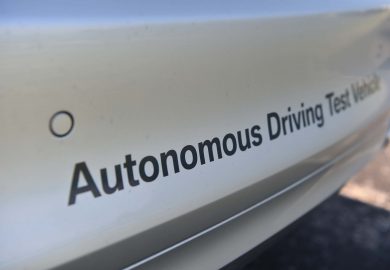Originally founded in 1994 in Seattle, Amazon is a technology giant that specializes in cloud computing services, internet sales of consumer goods, the delivery of digital content, and the production of its own brands of technology for use in the home. Some of its most popular items include Alexa, Kindle, and Amazon Basics. The company’s extensive network, cloud computing capacity, and supply chain give it a heads-up on the competition when it comes to setting up the networks that self-driving cars will need in order to navigate American roads.
Cloud Computing for Self-Driving Cars
In November of 2015, Amazon filed a patent for cloud computing in relation to road lane management for autonomous cars. This patent was finally accepted by the United States in January of 2017. With this management system for multilane roads, self-driving cars could determine what lanes to take based on factors like speed, final destination, time of the day, and traffic flow.
The networked roadway management system would use software, sensors, cameras, and radar on the autonomous cars. It would also make use of real-time information from global positioning satellites. From the satellites, the roadway management system would collect information about weather conditions, road conditions, traffic accidents, traffic levels, road construction, and other data.
Algorithm Design for Cloud-Based Self-Driving Car Software
The algorithm for management of road space for autonomous cars would have multiple steps. The algorithm designed by Amazon begins with obtaining the destination of where the self-driving car needs to go. The second step is assessment of the environmental conditions, in real-time, for the current and future locations of the car.
The software would then identify the appropriate route to take, find the cloud-based roadway management system for the route, and generate a request to use that roadway. After the cloud computing roadway management system accepts the request, the autonomous car would generate the routing instructions and begin driving itself to the destination.
Use of Cloud Computing for Enhanced Efficiency
Before the patient was accepted, other software for self-driving cars had not touched on the idea of reversible lanes, which are not yet common in the United States. However, the urban environment with heavy traffic is one place in which reversible lanes could be an emerging transportation trend. The goal behind Amazon’s patent filing for a cloud computing roadway management system is to use it for enhanced efficiency for the delivery of its products.
By coordinating the movement of many self-driving cars in reversible lanes at the same time, Amazon’s cloud computing system could both reduce traffic jams in cities and increase the company’s own efficiency in how it delivers goods to consumers. The research that Amazon has been doing on the cloud-based roadway management system is led by the same team that’s studying the use of drone delivery. This suggests that the company desires to increase its control over product delivery and keep more of its delivery services in-house.
Who Could Partner With Amazon
Amazon’s patent would allow it to maintain control over the cloud-based roadway management system, particularly the reversible lanes on highways, toll roads, and interstates. The company could then partner with any manufacturer of autonomous cars. The software and cloud-based access would allow Amazon to work with a variety of self-driving car services, including companies that intend to do commercial deliveries, ride-sharing services that may want to use the carpooling lanes for enhanced efficiency, and mass transit systems such as public busing.
The Alexa voice-command computer is being integrated into multiple makes of automobiles, including Ford, Mercedes-Benz, and Volkswagen. In Germany, Amazon has partnered with Audi and DHL in order to have packages delivered to a person’s car with the use of voice commands connected to its in-car Alexa system.
Self-Driving Forklifts and Semi Trucks
In order to further enhance its efficiency and get packages from the warehouse to the customer in less time, Amazon is researching and testing the use of self-driving forklifts in its warehouses. The forklifts would operate on cloud-based networks in order to move pallets of products. Amazon is also working on the technology related to self-driving semi trucks.
Those freight trucks would reduce the amount of time that it takes to get a parcel from the warehouse to the last-minute delivery service, such as the United States Postal Service, for local delivery. Amazon’s cloud-based computing system is already able to assess the most efficient delivery service, allowing the company to have its parcels delivered by its own drivers or the United States Postal Service based on cost and timeliness. With self-driving trucks, Amazon could reduce its labor costs while improving the timeliness of its deliveries.
























